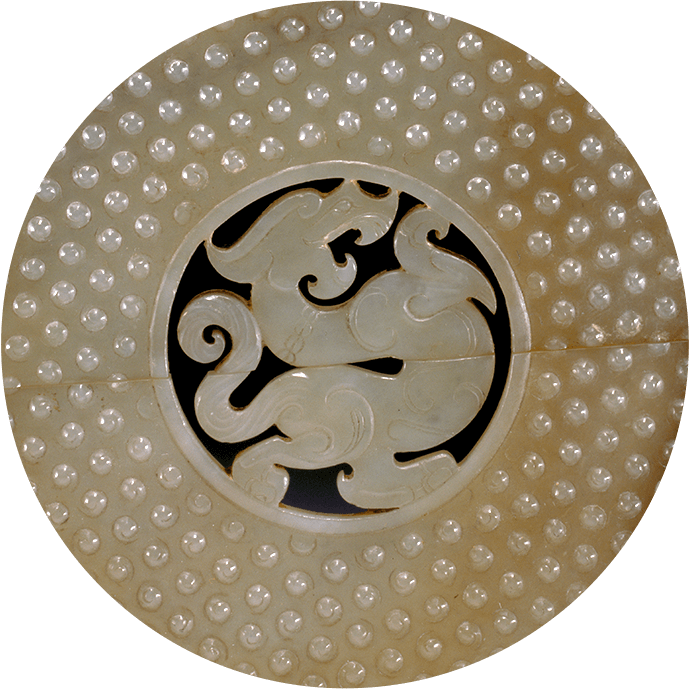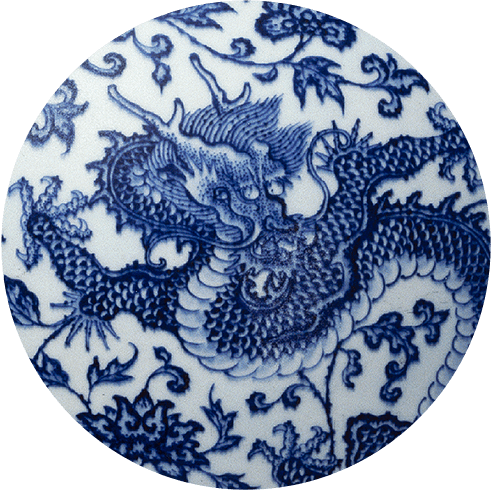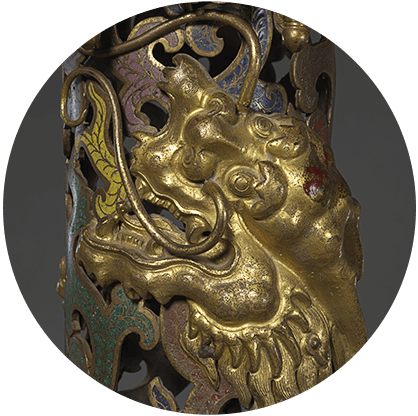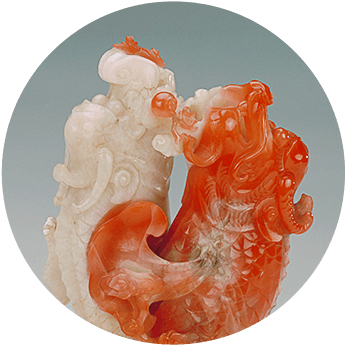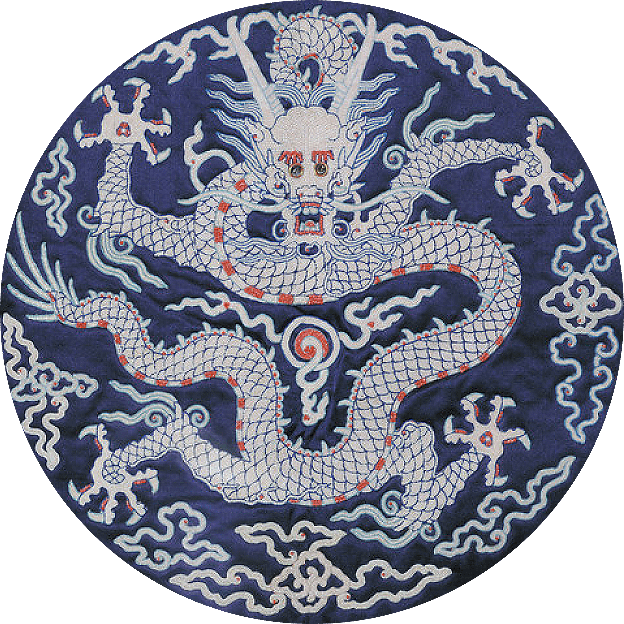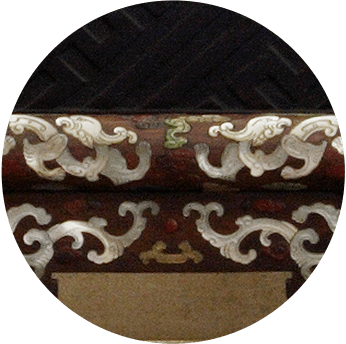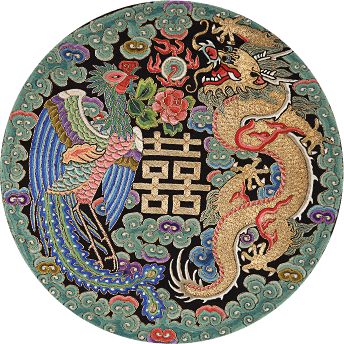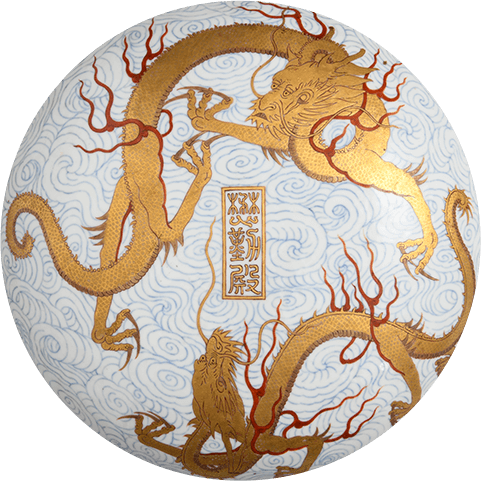Traditional Chinese sayings about the dragon include, "The dragon sired nine sons, but none became a dragon." Historically, various folk perspectives on the nine sons of the dragon have circulated throughout China. However, precise documentary evidence is lacking, so the exact nature of the mythical offspring has always been a mystery.
During the Ming dynasty, the Hongzhi Emperor (known posthumously as the Xiaozong Emperor r. 1488–1505; personal name Zhu Youcheng, 1470–1505) out of curiosity dispatched a eunuch to inquire of Li Dongyang (1447–1516) about legends of the dragon's nine sons. Then serving as minister in the Ministry of Rites and grand secretary in the Belvedere of Literary Profundity (Wenyuan ge), the erudite Li was unable to provide an immediate answer, although he did recollect reading about this seemingly simple subject in sources that escaped his memory. Consequently, he asked Luo Qi (1447–1519), a compiler in the Hanlin Academy, who could list merely five or six. He subsequently asked Liu Ji, vice-director of the Ministry of Personnel, who discovered a list of the nine sons of the dragon in an old folio but was unaware of the original source. Having no alternative, Li reported his incomplete findings to the emperor and, ultimately, synthesized his understandings in The Collection of the Hall of Cherishing Mount Yuelu (Huailu tang ji). As such, Li's response to the Hongzhi Emperor is recapitulated as follows.
The dragon sired nine sons, but none became a dragon. Each has a unique penchant.
The qiuniu, enamored with music, is carved into the scroll of a huqin (a type of fiddle).
The yazi has great martial prowess so is depicted as a dragon head with a gaping mouth on sword hilts and other such weapon components.
The chaofeng enjoys perilous adventures so is seen among mythical creatures on roof hips.
The pulao, fond of emitting sonorous calls, is cast as looped knobs atop bronze bells.
The suanni enjoys a seated pose and is, thus, seen as a guardian feline in Buddhist imagery.
The baxia, known for bearing heavy loads, serves as the plinth for stelae.
The bi'an is litigious and, therefore, rendered as a leonine image above and below the doors of prisons.
The bixi, a proficient literatus, is shown flanking inscribed monuments.
The chiwen swallows voraciously and is, thus, depicted at the ends of palatial roof ridges.
Despite being a literary submission by Li Dongyang to the emperor, the composition is criticized as piecemeal and for lacking clear evidentiary origins. In his Continued Dialogues from Wanderings (Langji xutan), the Qing-dynasty literatus Liang Zhangju candidly interrogates Li's work. When compared with historical Chinese motifs, Li's qiuniu, yazi, chaofeng, pulao, bixi, and chiwen are categorically variations of dragon designs. The other three are further removed from depictions of dragons since the baxia is an adaption of the tortoise, suanni of the lion, and bi'an of the tiger. Several of the sons' names provided by Li can be found in ancient literature. In the work Miscellaneous Records from the Legume Garden (Shuyuan zaji), the Ming writer Lu Rong (1436–1494) lists these designs of mythical creatures in a section called "Alternate Names for Various Ancient Objects" and does not mention any association to the dragon, which reflects the assiduity of Lu's scholarship. Li Dongyang's compilation for the emperor failed to resolve the mystery of the names of the nine sons and, in fact, added further complexity to research in later periods. In addition to the difference in name sequence, other lists include the gluttonous taotie, the clamped-mouthed jiaotu, the aquatic gongfu, and other creatures depending on the understanding of respective authors.
In actuality, the nine sons of the dragon should not be taken to mean literally nine sons since, in traditional Chinese culture, the number nine is an expression of plurality. Wang Zhong (1745–1794), a scholar of the Qing period, noted in "Exposition on Three and Nine" (Shi sanjiu) in Discourses on Learning (Shu xue) how the number three may be used when one and two are insufficient and that when three is inadequate nine may be used since it represents a multiplicity. Nine is a nominal number (xushu) while also considered the ultimate yang numeral. This nebulous designation allowed for the emergence of sayings like "the dragon sired nine sons". Nevertheless, the offspring of the mythical dragon are derivations of traditional dragon motifs and have served to expand the decorative themes and aesthetic applications of dragon imagery in Chinese art and architecture, which have always been beloved by people in China and around the world. Apart from the hearty baxia which is said to support stelae and the argumentative bi'an of prison gates, both of which are considered essentially nonextant, the remaining creatures in the assorted listings of the nine sons of the dragon may be found in various forms throughout the Forbidden City and the collection of the Palace Museum.
